Charcot-Marie-Tooth disease Type 2 (CMT2) – Axonal CMT
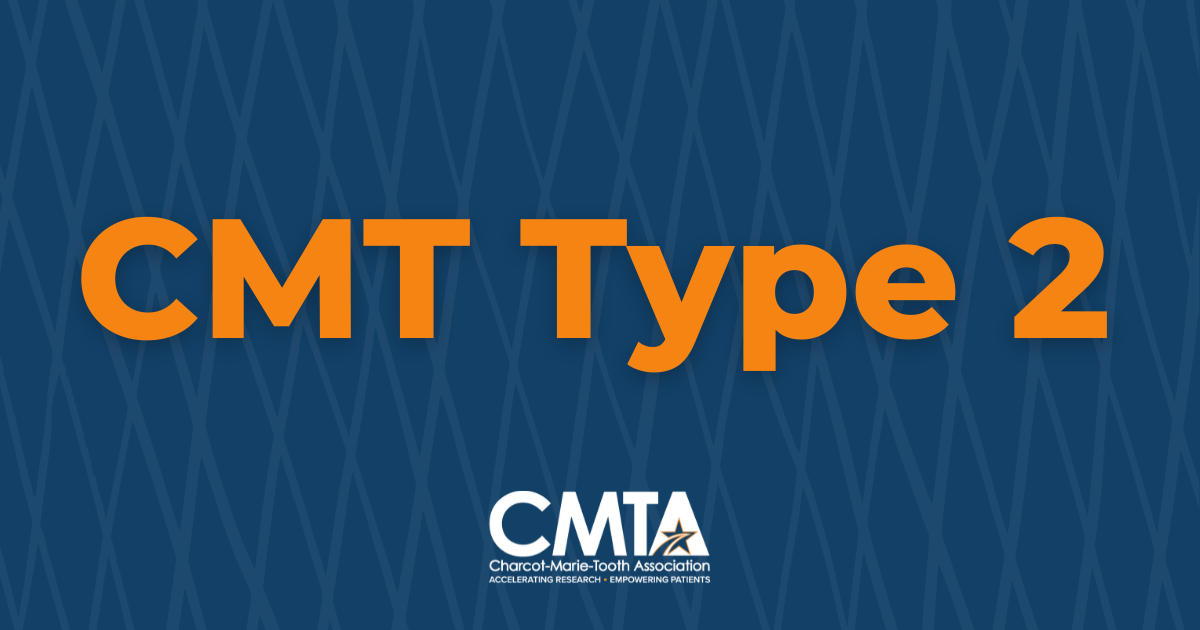
What is CMT Type 2?
CMT Type 2 represents axonal forms of Charcot-Marie-Tooth disease that are dominantly inherited and make up about one-third of all dominant CMT cases. Patients with Type 2 have a wider age range for onset of the disorder and more variation in degree of disability. (More about CMT Type 2: CMT_Type_2_Causes_Symptoms.pdf)What causes CMT2
CMT2 is caused by a variety of gene mutations. The gene that is mutated determines the subtype of CMT2 that a person has. Mutations that can cause type 2 include:- CMT2A, CMT2A2B, CMT2B4, HMSN6A – Mitofusin 2 (MFN2)
- CMT2B – Members RAS oncogene family (RAB7 or RAB7A)
- CMT2B1 – Lamin A/C (LMNA)
- CMT2B2 – Polynucleotide Kinase-Phosphatase (PNKP)
- CMT2B3, CMT2K – Ganglioside-induced differentiation-associated protein 1 (GDAP1)
- CMT2B5, CMT2E – Neurofilament light polypeptide (NEFL)
- CMT2C – TRP superfamily of cation channels (TRPV4)
- CMT2CC – Neurofilament heavy polypeptide (NEFH)
- CMT2D – Glycyl-tRNA synthetase (GARS)
- CMT2DD – ATPase Na+/K+ transporting subunit alpha 1 (ATP1A1)
- CMT2EE – mitochondrial inner membrane protein (MPV17)
- CMT2F – Heat shock 27-kD protein 1 (HSPB1/HSP27)
- CMT2FF – Cell adhesion molecule 3 gene (CADM3)
- CMT2GG (formerly called CMTDIA) – Golgi-specific brefeldin-A resistance factor 1 gene (GBF1)
- CMT2HH – Jagged 1 gene (JAG1/JAGL1)
- CMT2I, CMT2J – Myelin protein zero (MPZ/P0)
- CMT2L – Heat-shock 22-KD protein 8 (HSPB8/HSP22)
- CMT2M – Dynamin 2 (DNM2)
- CMT2N – Alanyl-tRNA synthetase (AARS1/AARS/ALARS)
- CMT2O – Dynein cytoplasmic 1 heavy chain 1 (DYNC1H1)
- CMT2P – Leucine rich repeat and sterile alpha motif containing 1 (LRSAM1)
- CMT2Q – Dehydrogenase E1 and transketolase domain containing protein 1 (DHTKD1)
- CMT2R – Tripartite motif containing protein 2 (TRIM2)
- CMT2S – Immunoglobulin mu DNA binding protein 2 (IGHMBP2)
- CMT2T – Membrane metalloendopeptidase (MME)
- CMT2U – Methionyl-tRNA synthetase (MARS1/MARS)
- CMT2V – N-acetyl-alpha-glucosaminidase (NAGLU)
- CMT2W – Histidyl-tRNA synthetase (HARS1/HARS)
- CMT2X – Spatacsin (SPG11)
- CMT2Y – Valosin containing protein (VCP)
- CMT2Z – MORC family CW-type zinc finger protein 2 (MORC2)
- HMSN-Okinawa Type – Protein TFG (TRK-fused gene protein) (TFG)
- MYH14-dHMN – Myosin, heavy chain 14 (MYH14)
What are the Symptoms of CMT2
CMT2 patients show little if any slowing in their nerve conductions, and biopsies show the loss of myelinated axons but little segmental demyelination/remyelination. The clinical presentation is similar to Type 1: distal weakness, muscle atrophy, sensory loss and foot deformities. They are slightly more likely to maintain their deep tendon reflexes.When do symptoms of CMT2 start?
The age of onset varies from childhood to 60 years of age, even within families. Whereas the original descriptions of CMT2 identified patients affected at an older than typical CMT1 patients, the mutations that cause these late onset cases have proven difficult to identify. Rather, MFN2 mutations, the commonest cause of CMT2 identified to date, cause an axonal neuropathy that mainly has an onset in childhood. All other types of CMT2 are rare; many more genetic causes remain to be discovered.What are the Type 2 Subtypes?
This section is being updated. Please refer to the above section for the full list of CMT Type 2 subtypes currently known and their associated gene mutations.
-
-
Type 2A
 The defect causing CMT2A is found on chromosome 1p36 at the MFN2 gene. This gene is mutated and is involved in the fusion of mitochondria, the metabolic engines of the cells.
Research on CMT Type 2A
The defect causing CMT2A is found on chromosome 1p36 at the MFN2 gene. This gene is mutated and is involved in the fusion of mitochondria, the metabolic engines of the cells.
Research on CMT Type 2A
-
-
-
Type 2A2B
 CMT2A2B is the recessive form of CMT2A. Historically, KIF1B was originally published as causing CMT2A. That turned out to be incorrect, but the paper was never retracted, so when the real cause—MFN2— was identified, they differentiated by labeling KIF1B mutations as CMT2A1 and MFN2 mutations as causing CMT2A2. CMT experts do not agree with this designation, and most just call it CMT2A for all MFN2 mutations as the other gene is not something we see. However, some mutations in MFN2 only become a problem when you have mutations in both copies of the gene, and therefore to distinguish this they added the classification CMT2A2A for the dominant form of MFN2 mutations and CMT2A2B for the recessive form of MFN2 mutations.
Dominant forms of MFN2 mutation cause a gain of toxic function, so essentially the abnormal protein is blocking the function of the working protein and somehow treatment will need to silence that abnormal copy or cut it out. If it can be silenced, blocked or cut it out so it is not being made, then the working copy of MFN2 may be able to help with the function of that protein.
However, for the recessive forms of MFN2, patients probably have a loss of function because there are mutations in both copies of the gene. In that case, function may potentially be restored by somehow replacing the mutated genes with a healthy working copy of MFN2 or by enhancing (turning up the volume) of MFN1, which is a similar gene and has a similar protein function in the body.
CMT2A2B is the recessive form of CMT2A. Historically, KIF1B was originally published as causing CMT2A. That turned out to be incorrect, but the paper was never retracted, so when the real cause—MFN2— was identified, they differentiated by labeling KIF1B mutations as CMT2A1 and MFN2 mutations as causing CMT2A2. CMT experts do not agree with this designation, and most just call it CMT2A for all MFN2 mutations as the other gene is not something we see. However, some mutations in MFN2 only become a problem when you have mutations in both copies of the gene, and therefore to distinguish this they added the classification CMT2A2A for the dominant form of MFN2 mutations and CMT2A2B for the recessive form of MFN2 mutations.
Dominant forms of MFN2 mutation cause a gain of toxic function, so essentially the abnormal protein is blocking the function of the working protein and somehow treatment will need to silence that abnormal copy or cut it out. If it can be silenced, blocked or cut it out so it is not being made, then the working copy of MFN2 may be able to help with the function of that protein.
However, for the recessive forms of MFN2, patients probably have a loss of function because there are mutations in both copies of the gene. In that case, function may potentially be restored by somehow replacing the mutated genes with a healthy working copy of MFN2 or by enhancing (turning up the volume) of MFN1, which is a similar gene and has a similar protein function in the body.
-
-
-
Type 2B
 CMT2B is characterized by severe ulceration problems and the defect is located on chromosome 3, the RAB 7 protein. CMT 2B is predominantly a sensory disorder and there is some thought that it is not really CMT, but a pure sensory neuropathy.
CMT2B is characterized by severe ulceration problems and the defect is located on chromosome 3, the RAB 7 protein. CMT 2B is predominantly a sensory disorder and there is some thought that it is not really CMT, but a pure sensory neuropathy.
-
-
-
Type 2C
 CMT2C is a very rare form in which patients may have diaphragm or vocal cord paresis in addition to the other problems of CMT. Linkage to chromosome 12 has been found.
CMT2C is a very rare form in which patients may have diaphragm or vocal cord paresis in addition to the other problems of CMT. Linkage to chromosome 12 has been found.
-
-
-
Type 2D
 The CMT2D locus is on chromosome 7p14 and the genetic cause has been identified as mutations in the glycyl RNA synthetase gene. CMT2D is a confusing disorder because some patients have sensorimotor neuropathies, while others have only motor symptoms.
The CMT2D locus is on chromosome 7p14 and the genetic cause has been identified as mutations in the glycyl RNA synthetase gene. CMT2D is a confusing disorder because some patients have sensorimotor neuropathies, while others have only motor symptoms.
-
-
-
Type 2E
 CMT2E has been established with linkage to chromosome 8p21 and studies have identified mutations in the neurofilament light gene.
Research on CMT Type 2E
CMT2E has been established with linkage to chromosome 8p21 and studies have identified mutations in the neurofilament light gene.
Research on CMT Type 2E
-
-
-
Type 2F
 Dominant mutations in HSPB1 have been reported to cause CMT2F. Other mutations also known to cause CMT2F produce a more purely motor phenotype, HMN IIb. The clinical onset of weakness ranges from the second to the fourth decade, followed by the development of prominent weakness in the distal muscles of the legs then arms.
Research on CMT Type 2F
Dominant mutations in HSPB1 have been reported to cause CMT2F. Other mutations also known to cause CMT2F produce a more purely motor phenotype, HMN IIb. The clinical onset of weakness ranges from the second to the fourth decade, followed by the development of prominent weakness in the distal muscles of the legs then arms.
Research on CMT Type 2F
-
-
-
Type 2K
 CMT2K is caused by dominantly inherited mutations in the GDAP1 gene (as opposed to CMT4A, which is inherited in a recessive manner). About 25% of people with mutations in GDAP1 have CMT2K, and 75% have the recessive CMT4A (two mutations in the gene). Symptom onset varies, with about ¼ of people having symptoms before age 10 years, 41% between 10 and 30 years, 20% over 30 years, and 14% asymptomatic after 50 years of age. Less than 10% of people with CMT2K need a wheelchair full-time.
CMT2K is caused by dominantly inherited mutations in the GDAP1 gene (as opposed to CMT4A, which is inherited in a recessive manner). About 25% of people with mutations in GDAP1 have CMT2K, and 75% have the recessive CMT4A (two mutations in the gene). Symptom onset varies, with about ¼ of people having symptoms before age 10 years, 41% between 10 and 30 years, 20% over 30 years, and 14% asymptomatic after 50 years of age. Less than 10% of people with CMT2K need a wheelchair full-time.
-
-
-
Type 2O
 CMT2O is caused by disease-causing variants in the DYNC1H1 gene. This is usually a pure motor form of CMT, with little to no sensory symptoms, with axonal nerve conduction studies. So far, only one variant in this gene has been found to cause CMT2O (c.917A>G, p.His306Arg). Other variants in this gene have been associated with a variety of conditions, some similar to CMT (spinal muscular atrophy with lower extremity predominance (SMA-LED) – lower limb weakness and pes cavus, scoliosis, hip weakness), and some less similar (complicated hereditary spastic paraplegia (cHSP), and malformations of cortical development (MCD) – both which include intellectual impairment).
CMT2O is caused by disease-causing variants in the DYNC1H1 gene. This is usually a pure motor form of CMT, with little to no sensory symptoms, with axonal nerve conduction studies. So far, only one variant in this gene has been found to cause CMT2O (c.917A>G, p.His306Arg). Other variants in this gene have been associated with a variety of conditions, some similar to CMT (spinal muscular atrophy with lower extremity predominance (SMA-LED) – lower limb weakness and pes cavus, scoliosis, hip weakness), and some less similar (complicated hereditary spastic paraplegia (cHSP), and malformations of cortical development (MCD) – both which include intellectual impairment).
-
-
-
Type 2P
 CMT2P is a rare form of CMT, caused by mutations in the LRSAM1 gene. There have only been a handful of reports of this type in the literature, so more research is needed to understand the range of presentation for people with this type of CMT. The clinical phenotype can be summarized as a relatively mild, very slowly progressive axonal neuropathy with age of onset in the second or third decade of life. Most people after age 30 years have some motor symptoms and pes cavus. There are a couple of reports of fasciculations, or involuntary muscle twitches, in the legs. There are several reports of erectile dysfunction. People may have an elevated serum creatine kinase (CK) level, a measure of leaky muscles (not commonly elevated in CMT).
CMT2P is a rare form of CMT, caused by mutations in the LRSAM1 gene. There have only been a handful of reports of this type in the literature, so more research is needed to understand the range of presentation for people with this type of CMT. The clinical phenotype can be summarized as a relatively mild, very slowly progressive axonal neuropathy with age of onset in the second or third decade of life. Most people after age 30 years have some motor symptoms and pes cavus. There are a couple of reports of fasciculations, or involuntary muscle twitches, in the legs. There are several reports of erectile dysfunction. People may have an elevated serum creatine kinase (CK) level, a measure of leaky muscles (not commonly elevated in CMT).
-
-
-
Type 2S
 CMT2S was first discovered by Dr. Ellen Cottenie in 2014 (http://www.cell.com/ajhg/fulltext/S0002-9297(14)00424-8). After publication of her article, it was officially registered in the genetic database. CMT2S is caused by a mutation in the IGHMBP2 gene. IGHMBP2 gene mutations can present with two different phenotypes: 1) the severe SMARD1 (Spinal Muscular Atrophy associated with Respiratory Distress) or 2) the milder CMT2S. Both are rare and recessive in nature. Depending on the specific mutations, patients either have SMARD1, caused by autosomal recessive mutations in the IGHMBP2 gene (which is not related to the myelin protein MBP), or they have CMT2S, which results in slowly progressive weakness, wasting, and sensory loss with an axonal neuropathy typical of CMT2, but without significant respiratory compromise.
Research on CMT Type 2S
CMT2S was first discovered by Dr. Ellen Cottenie in 2014 (http://www.cell.com/ajhg/fulltext/S0002-9297(14)00424-8). After publication of her article, it was officially registered in the genetic database. CMT2S is caused by a mutation in the IGHMBP2 gene. IGHMBP2 gene mutations can present with two different phenotypes: 1) the severe SMARD1 (Spinal Muscular Atrophy associated with Respiratory Distress) or 2) the milder CMT2S. Both are rare and recessive in nature. Depending on the specific mutations, patients either have SMARD1, caused by autosomal recessive mutations in the IGHMBP2 gene (which is not related to the myelin protein MBP), or they have CMT2S, which results in slowly progressive weakness, wasting, and sensory loss with an axonal neuropathy typical of CMT2, but without significant respiratory compromise.
Research on CMT Type 2S
-
-
-
Type 2Y
CMT2Y is caused by a mutation in the valosin-containing protein gene (VCP) on Chromosome 9p13.3.
-
-
-
Type 2Z
 CMT2Z stems from disease-causing variants in MORC2. Some people present with generalized weakness in infancy while others present with adult-onset weakness that may include proximal muscles and sensory loss. Many people’s first symptom is cramping in the legs. This form of CMT is length-dependent (meaning that it affects the nerves farthest from the spine first and then travels up), as is typical for CMT, but over decades it progresses to muscles above the knees and elbows, including the hip muscles, deltoids and neck muscles. People with CMT2Z may require progressive ambulation aids over time, with most needing a wheelchair around the fifth decade. This may end up being a very common form of axonal CMT, but because it was only associated with CMT in 2016, it will take some time to see what proportion of the population has CMT2Z. This gene also seems to have a high new mutation rate, with one paper estimating that up to 75 percent of people are the first in their families with disease-causing variants in MORC2.
CMT2Z stems from disease-causing variants in MORC2. Some people present with generalized weakness in infancy while others present with adult-onset weakness that may include proximal muscles and sensory loss. Many people’s first symptom is cramping in the legs. This form of CMT is length-dependent (meaning that it affects the nerves farthest from the spine first and then travels up), as is typical for CMT, but over decades it progresses to muscles above the knees and elbows, including the hip muscles, deltoids and neck muscles. People with CMT2Z may require progressive ambulation aids over time, with most needing a wheelchair around the fifth decade. This may end up being a very common form of axonal CMT, but because it was only associated with CMT in 2016, it will take some time to see what proportion of the population has CMT2Z. This gene also seems to have a high new mutation rate, with one paper estimating that up to 75 percent of people are the first in their families with disease-causing variants in MORC2.
-






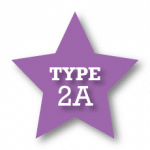 The defect causing CMT2A is found on chromosome 1p36 at the MFN2 gene. This gene is mutated and is involved in the fusion of mitochondria, the metabolic engines of the cells.
The defect causing CMT2A is found on chromosome 1p36 at the MFN2 gene. This gene is mutated and is involved in the fusion of mitochondria, the metabolic engines of the cells.
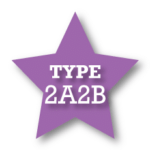 CMT2A2B is the recessive form of CMT2A. Historically, KIF1B was originally published as causing CMT2A. That turned out to be incorrect, but the paper was never retracted, so when the real cause—MFN2— was identified, they differentiated by labeling KIF1B mutations as CMT2A1 and MFN2 mutations as causing CMT2A2. CMT experts do not agree with this designation, and most just call it CMT2A for all MFN2 mutations as the other gene is not something we see. However, some mutations in MFN2 only become a problem when you have mutations in both copies of the gene, and therefore to distinguish this they added the classification CMT2A2A for the dominant form of MFN2 mutations and CMT2A2B for the recessive form of MFN2 mutations.
Dominant forms of MFN2 mutation cause a gain of toxic function, so essentially the abnormal protein is blocking the function of the working protein and somehow treatment will need to silence that abnormal copy or cut it out. If it can be silenced, blocked or cut it out so it is not being made, then the working copy of MFN2 may be able to help with the function of that protein.
However, for the recessive forms of MFN2, patients probably have a loss of function because there are mutations in both copies of the gene. In that case, function may potentially be restored by somehow replacing the mutated genes with a healthy working copy of MFN2 or by enhancing (turning up the volume) of MFN1, which is a similar gene and has a similar protein function in the body.
CMT2A2B is the recessive form of CMT2A. Historically, KIF1B was originally published as causing CMT2A. That turned out to be incorrect, but the paper was never retracted, so when the real cause—MFN2— was identified, they differentiated by labeling KIF1B mutations as CMT2A1 and MFN2 mutations as causing CMT2A2. CMT experts do not agree with this designation, and most just call it CMT2A for all MFN2 mutations as the other gene is not something we see. However, some mutations in MFN2 only become a problem when you have mutations in both copies of the gene, and therefore to distinguish this they added the classification CMT2A2A for the dominant form of MFN2 mutations and CMT2A2B for the recessive form of MFN2 mutations.
Dominant forms of MFN2 mutation cause a gain of toxic function, so essentially the abnormal protein is blocking the function of the working protein and somehow treatment will need to silence that abnormal copy or cut it out. If it can be silenced, blocked or cut it out so it is not being made, then the working copy of MFN2 may be able to help with the function of that protein.
However, for the recessive forms of MFN2, patients probably have a loss of function because there are mutations in both copies of the gene. In that case, function may potentially be restored by somehow replacing the mutated genes with a healthy working copy of MFN2 or by enhancing (turning up the volume) of MFN1, which is a similar gene and has a similar protein function in the body.
 CMT2B is characterized by severe ulceration problems and the defect is located on chromosome 3, the RAB 7 protein. CMT 2B is predominantly a sensory disorder and there is some thought that it is not really CMT, but a pure sensory neuropathy.
CMT2B is characterized by severe ulceration problems and the defect is located on chromosome 3, the RAB 7 protein. CMT 2B is predominantly a sensory disorder and there is some thought that it is not really CMT, but a pure sensory neuropathy.
 CMT2C is a very rare form in which patients may have diaphragm or vocal cord paresis in addition to the other problems of CMT. Linkage to chromosome 12 has been found.
CMT2C is a very rare form in which patients may have diaphragm or vocal cord paresis in addition to the other problems of CMT. Linkage to chromosome 12 has been found.
 The CMT2D locus is on chromosome 7p14 and the genetic cause has been identified as mutations in the glycyl RNA synthetase gene. CMT2D is a confusing disorder because some patients have sensorimotor neuropathies, while others have only motor symptoms.
The CMT2D locus is on chromosome 7p14 and the genetic cause has been identified as mutations in the glycyl RNA synthetase gene. CMT2D is a confusing disorder because some patients have sensorimotor neuropathies, while others have only motor symptoms.
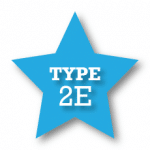 CMT2E has been established with linkage to chromosome 8p21 and studies have identified mutations in the neurofilament light gene.
CMT2E has been established with linkage to chromosome 8p21 and studies have identified mutations in the neurofilament light gene.
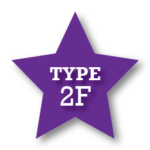 Dominant mutations in HSPB1 have been reported to cause CMT2F. Other mutations also known to cause CMT2F produce a more purely motor phenotype, HMN IIb. The clinical onset of weakness ranges from the second to the fourth decade, followed by the development of prominent weakness in the distal muscles of the legs then arms.
Dominant mutations in HSPB1 have been reported to cause CMT2F. Other mutations also known to cause CMT2F produce a more purely motor phenotype, HMN IIb. The clinical onset of weakness ranges from the second to the fourth decade, followed by the development of prominent weakness in the distal muscles of the legs then arms.
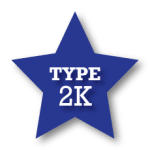 CMT2K is caused by dominantly inherited mutations in the GDAP1 gene (as opposed to CMT4A, which is inherited in a recessive manner). About 25% of people with mutations in GDAP1 have CMT2K, and 75% have the recessive CMT4A (two mutations in the gene). Symptom onset varies, with about ¼ of people having symptoms before age 10 years, 41% between 10 and 30 years, 20% over 30 years, and 14% asymptomatic after 50 years of age. Less than 10% of people with CMT2K need a wheelchair full-time.
CMT2K is caused by dominantly inherited mutations in the GDAP1 gene (as opposed to CMT4A, which is inherited in a recessive manner). About 25% of people with mutations in GDAP1 have CMT2K, and 75% have the recessive CMT4A (two mutations in the gene). Symptom onset varies, with about ¼ of people having symptoms before age 10 years, 41% between 10 and 30 years, 20% over 30 years, and 14% asymptomatic after 50 years of age. Less than 10% of people with CMT2K need a wheelchair full-time.
 CMT2O is caused by disease-causing variants in the DYNC1H1 gene. This is usually a pure motor form of CMT, with little to no sensory symptoms, with axonal nerve conduction studies. So far, only one variant in this gene has been found to cause CMT2O (c.917A>G, p.His306Arg). Other variants in this gene have been associated with a variety of conditions, some similar to CMT (spinal muscular atrophy with lower extremity predominance (SMA-LED) – lower limb weakness and pes cavus, scoliosis, hip weakness), and some less similar (complicated hereditary spastic paraplegia (cHSP), and malformations of cortical development (MCD) – both which include intellectual impairment).
CMT2O is caused by disease-causing variants in the DYNC1H1 gene. This is usually a pure motor form of CMT, with little to no sensory symptoms, with axonal nerve conduction studies. So far, only one variant in this gene has been found to cause CMT2O (c.917A>G, p.His306Arg). Other variants in this gene have been associated with a variety of conditions, some similar to CMT (spinal muscular atrophy with lower extremity predominance (SMA-LED) – lower limb weakness and pes cavus, scoliosis, hip weakness), and some less similar (complicated hereditary spastic paraplegia (cHSP), and malformations of cortical development (MCD) – both which include intellectual impairment).
 CMT2P is a rare form of CMT, caused by mutations in the LRSAM1 gene. There have only been a handful of reports of this type in the literature, so more research is needed to understand the range of presentation for people with this type of CMT. The clinical phenotype can be summarized as a relatively mild, very slowly progressive axonal neuropathy with age of onset in the second or third decade of life. Most people after age 30 years have some motor symptoms and pes cavus. There are a couple of reports of fasciculations, or involuntary muscle twitches, in the legs. There are several reports of erectile dysfunction. People may have an elevated serum creatine kinase (CK) level, a measure of leaky muscles (not commonly elevated in CMT).
CMT2P is a rare form of CMT, caused by mutations in the LRSAM1 gene. There have only been a handful of reports of this type in the literature, so more research is needed to understand the range of presentation for people with this type of CMT. The clinical phenotype can be summarized as a relatively mild, very slowly progressive axonal neuropathy with age of onset in the second or third decade of life. Most people after age 30 years have some motor symptoms and pes cavus. There are a couple of reports of fasciculations, or involuntary muscle twitches, in the legs. There are several reports of erectile dysfunction. People may have an elevated serum creatine kinase (CK) level, a measure of leaky muscles (not commonly elevated in CMT).
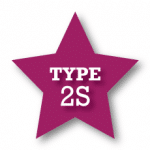 CMT2S was first discovered by Dr. Ellen Cottenie in 2014 (
CMT2S was first discovered by Dr. Ellen Cottenie in 2014 ( CMT2Z stems from disease-causing variants in MORC2. Some people present with generalized weakness in infancy while others present with adult-onset weakness that may include proximal muscles and sensory loss. Many people’s first symptom is cramping in the legs. This form of CMT is length-dependent (meaning that it affects the nerves farthest from the spine first and then travels up), as is typical for CMT, but over decades it progresses to muscles above the knees and elbows, including the hip muscles, deltoids and neck muscles. People with CMT2Z may require progressive ambulation aids over time, with most needing a wheelchair around the fifth decade. This may end up being a very common form of axonal CMT, but because it was only associated with CMT in 2016, it will take some time to see what proportion of the population has CMT2Z. This gene also seems to have a high new mutation rate, with one paper estimating that up to 75 percent of people are the first in their families with disease-causing variants in MORC2.
CMT2Z stems from disease-causing variants in MORC2. Some people present with generalized weakness in infancy while others present with adult-onset weakness that may include proximal muscles and sensory loss. Many people’s first symptom is cramping in the legs. This form of CMT is length-dependent (meaning that it affects the nerves farthest from the spine first and then travels up), as is typical for CMT, but over decades it progresses to muscles above the knees and elbows, including the hip muscles, deltoids and neck muscles. People with CMT2Z may require progressive ambulation aids over time, with most needing a wheelchair around the fifth decade. This may end up being a very common form of axonal CMT, but because it was only associated with CMT in 2016, it will take some time to see what proportion of the population has CMT2Z. This gene also seems to have a high new mutation rate, with one paper estimating that up to 75 percent of people are the first in their families with disease-causing variants in MORC2.